
views
Removing Bedding Debris
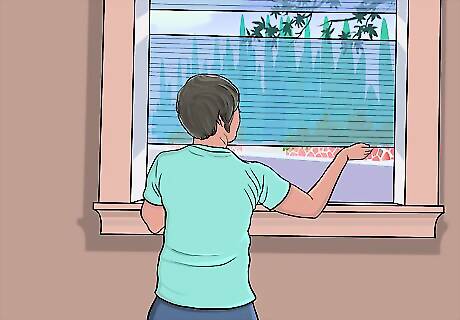
Ventilate the room. Make sure that the room you’re working in is well-ventilated. Open all windows and doors in the room. In addition, open windows elsewhere in your house and turn on the air conditioning to encourage cross-ventilation. Make sure the room is not very humid or moist. By ventilating the room, you'll help the mattress dry after you use cleaners on it and will allow bad smells and chemical smells to dissipate.
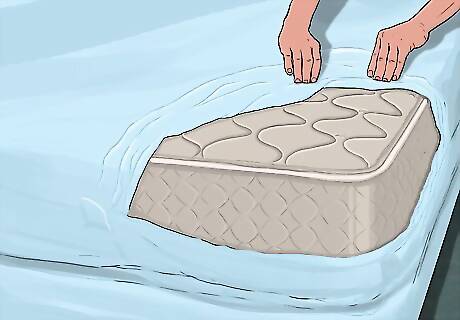
Strip the sheets and bedding. Before you take any steps to clean the mattress, you must remove everything from the mattress that is not part of it. This is important, as dirt, grime, and bad scents can accumulate on sheets, mattress liners, mattress protectors, and other things we commonly put on top of our mattresses. Carefully fold your sheets up as you remove them so more dust or dirt does not fall on to the mattress. Remove any mattress protectors you may have covered it with. Take off any pieces of fabric that can be detached.

Vacuum the mattress. Perhaps the most important way to prepare your mattress is to vacuum it completely. Without vacuuming it properly, there will be a lot of dirt and debris left on the mattress – undermining your effort to clean it. Use an upholstery attachment with your vacuum. Systematically go back-and-forth width-wise on the mattress until you vacuum the whole thing. Use the crevice attachment to vacuum hard-to-reach places like crevices, indentations, and embroidery. Flip the mattress and vacuum the other side.
Deodorizing and Disinfecting

Deodorize with baking soda. Sprinkle baking soda or another deodorizer liberally on the mattress. Allow the baking soda to sit for up to 24 hours. Without properly deodorizing the mattress, your mattress will retain smells and won’t be properly cleaned. It is okay if you wind up using an entire box or even more. The longer the baking soda sits, the more moisture and odor it will absorb from the mattress. There are a variety of mattress deodorizer products you can choose to use when cleaning your mattress. Just make sure to follow the directions on the product’s box. If you live in a dry climate, consider leaving your window open. If possible, move the mattress into the sunlight.

Vacuum again. After you’ve allowed the deodorizer to sit on the mattress for an extended period, you need to vacuum the mattress again. Use your upholstery tool and crevice attachment to remove all the deodorizer. After you think you’ve removed all the deodorizing, vacuum the mattress again. By vacuuming the mattress, you’ll remove not only the deodorizer, but the smell and other debris, too.
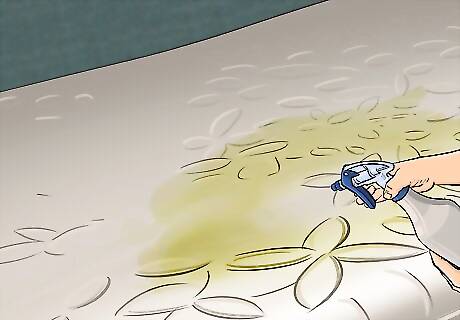
Kill dust mites. This is important, as dust mites are known to aggravate allergies, may cause asthma, and may cause rashes. You can eliminate dust mites by lightly spraying a mixture of essential oils on your mattress. Combine: 16 fluid ounces (470 mL) of distilled water. 2 teaspoons of essential oils. Some oils may include: clove, rosemary, eucalyptus, caraway, or tea tree. Spray the mixture lightly over your entire mattress. Allow the mixture to dry before proceeding.
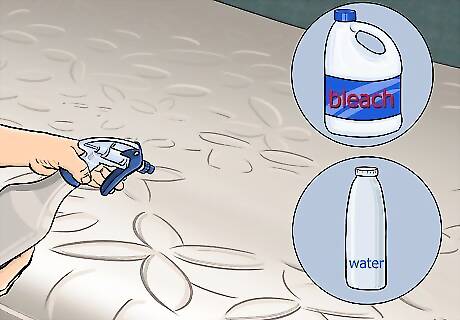
Disinfect your mattress. To complete your deep clean, you’ll also have to disinfect your mattress. This is important, as your mattress may accumulate bacteria and other contaminants over time. This is especially important if you’re cleaning the mattress for someone new to use. Combine 2 fluid ounces (59 mL) of bleach and 1 gallon (3.8 L) of cool or cold water. Do not add any other ingredients to the mixture. Spray the mixture lightly over your mattress and then wipe it down with a clean, damp rag. Use safety equipment like gloves, goggles, or even a mask when working with bleach. In addition, make sure you are in a well-ventilated area. If it is a dry, sunny day, you can bring the mattress outside to dry out. You can also use other products like Lysol spray or vodka to disinfect your mattress.
Protect your clean mattress with a mattress cover. After you finish cleaning your mattress, you might want to protect it from further dirt and dust by placing a mattress cover over it. This will help to keep your mattress cleaner for a longer period of time. You can get a waterproof mattress cover to protect your mattress from moisture, such as from sweat and urine.
Removing Stains
Check for stains regularly. Check your mattress periodically for stains and clean them right away when you notice one. This will help to prevent them from setting in and keep your mattress cleaner. Any time you suspect your mattress might have a stain, check under the sheets and clean it right away.
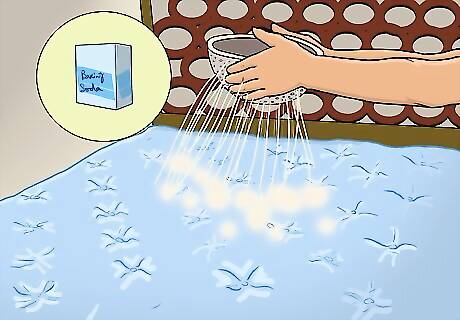
Clean dirt or smudges from a mattress. Lightly spray the mattress with vinegar and sprinkle a small amount of baking soda on the stain. Allow the mixture to sit for a couple hours. Scrape off the baking soda with a butter knife or flat piece of plastic. Vacuum up the baking soda after it has dried. Dirt stains are not only unsightly, but they can be a breeding ground for bacteria and other health problems. For tougher stains, consider using general upholstery cleaner or other solutions intended for use on mattresses. Make sure to follow the directions and do not oversaturate the mattress.
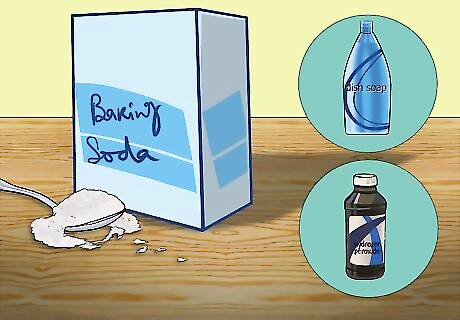
Fight urine stains. Combine 3 tablespoons of baking soda and 8 fluid ounces (240 mL) of hydrogen peroxide with a half teaspoon of dish soap. Lightly dab the solution on the urine stain. Avoid soaking the mattress with your solution. Allow the area to dry. Urine is one of the most common stains on mattresses – especially on mattresses used by children. Not only does urine stain mattresses, but it leaves a nasty odor that is hard to get rid of. If the stain is still visible, combine 3 tablespoons of laundry powder and 1 tablespoon (14.8 ml) of water. Spread this on the stain and allow it to sit for half an hour. Then, remove the paste with a knife or thin flat piece of plastic. Vacuum to remove any residue.
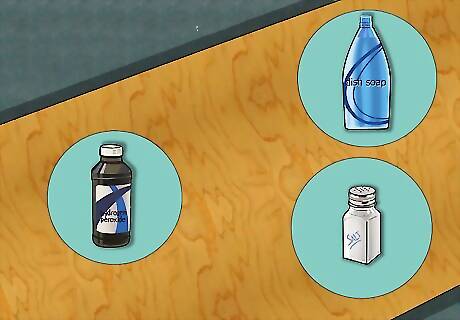
Remove blood stains. Combine 2 fluid ounces (59 mL) of hydrogen peroxide and 1 tablespoon (14.8 ml) each of dish soap and table salt. Spread the concoction over the stain and let it sit. Scape the remaining residue off with a butter knife or thin piece of plastic. While not as common as urine, blood stains on mattresses are not that rare. But while blood stains lack the odor of urine stains, they’re often harder to remove. If the stain is still visible, lightly dab it with a clean white cloth that has been moistened with hydrogen peroxide.
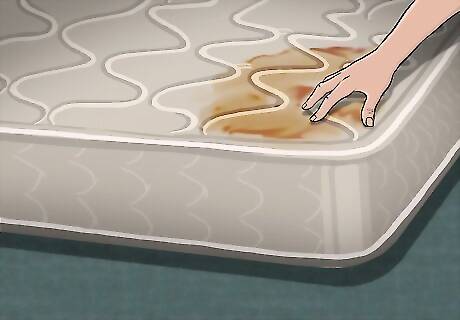
Lighten vomit stains. Moisten a clean white cloth with cleaning ammonia and dab the stain lightly. Wipe the area again with a clean white cloth. Ventilate the room. Avoid using too much ammonia or any other liquid on your mattress. Perhaps the toughest stain to remove are vomit stains, because stomach acid and food products combined create an unpredictable combination that is hard to target with specific cleaning products.

















Comments
0 comment